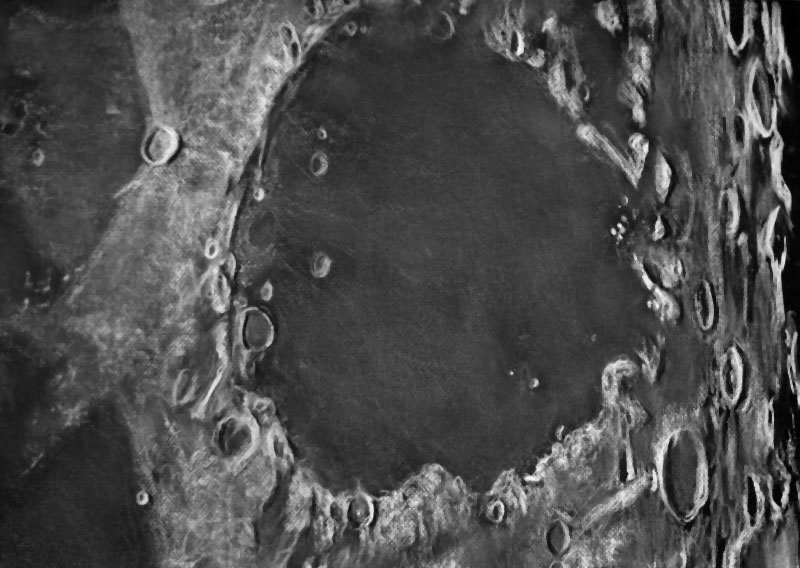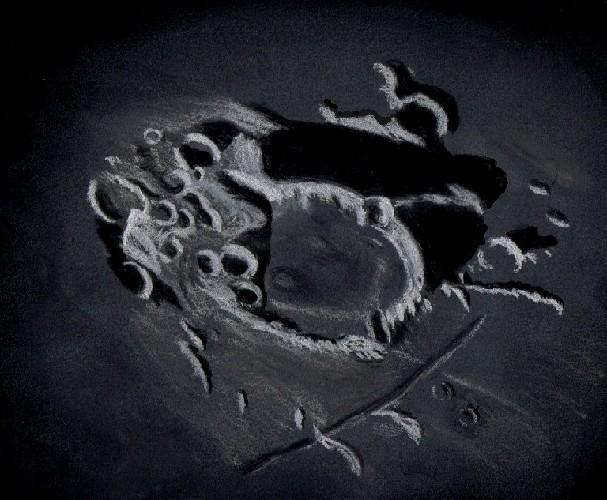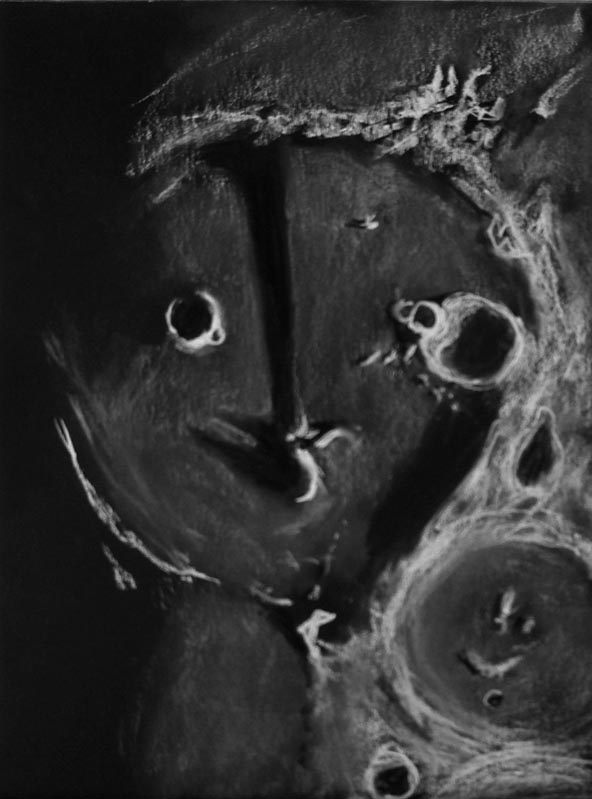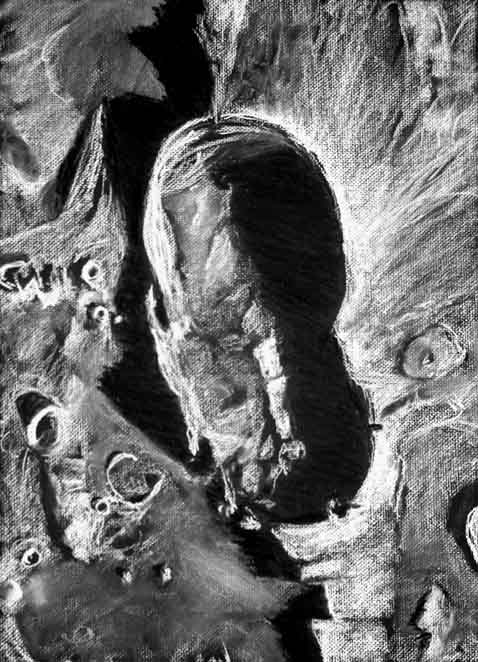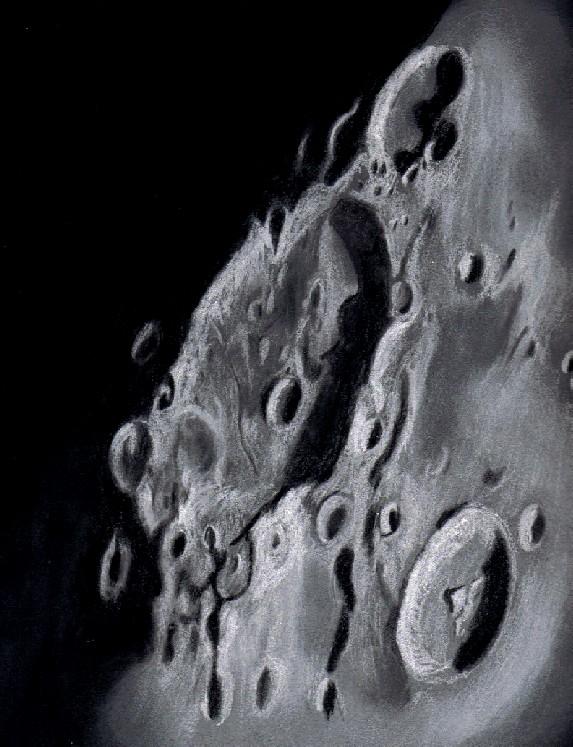Hecataeus and Humboldt
By Frank McCabe
At nightfall a beautiful orange waning gibbous moon just a day past full was rising at the early summer sunrise point on the northeastern horizon. The cold atmosphere was nearly saturated with water and ice creating some ice fog and reduced transparency. By 11:30 pm local time the moon was high enough in the sky for a close up view, although the temperature had plunged to well below freezing. The telescope was completely covered with thick hoar frost at the beginning of my sketching interval. I used extended time on this sketch to go indoors to warm my fingers. My sketching target was crater Humboldt and its smaller neighbor Hecataeus. Upper Imbrium era Humboldt is a large floor fractured, walled plain formation, 207 kilometers across. High on the convex floor a line of central peaks and craters can be seen in the foreshortened view. Just as seen in nearby Petavius (not visible in the sketch) dark pyroclastic deposites were visible at the corners of the floor. Floor fractures here and on neighboring Hecataeus to the left could not be detected visually at the eyepiece because of less than ideal seeing. Hecataeus at 130 kilometers in diameter and slightly older than Humboldt was showing off a substantial wall line on its floor just proximal to crater Humboldt.
Sketching:
For this sketch I used: black Strathmore 400 Artagain paper, 9”x 9”, white and black Conte’pastel pencils and a blending stump. Brightness was slightly decreased after scanning.
Telescope: 10 inch f/5.7 Dobsonian and 6mm eyepiece 241x
Date: 11-25-2007 5:30-7:00 UT
Temperature: -3°C (27°F)
ice fog, calm
Seeing: Antoniadi III
Co longitude: 95.9°
Lunation: 15.3 days
Illumination: 99.4 %
Frank McCabe



